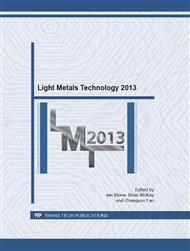p.776
p.783
p.788
p.793
p.798
p.803
p.808
p.813
p.818
Peeling of Aluminium Tubes as an Efficient Method for Energy Absorption in Vehicle Front Structures
Abstract:
Current crash structures in cars are still using the buckling of metallic structures to absorb the kinetic energy in case of an impact. The disadvantage of this technology is that changes within the static structural behaviour, like e.g. the stiffness or eigenfrequencies, will cause changes in the crash behaviour, even if this is not desired. This correlation between static and dynamic behaviour causes many development loops to adjust the crash behaviour, e.g. through optimizing trigger geometries which lower the initial crash forces. The German Aerospace Center (DLR) - Institute of Vehicle Concepts has developed a novel method to offer an efficient way of absorbing energy by peeling the outer skin of load bearing structures, like the crash boxes and the longitudinal rails. This technology provides an adjustable force level without changing the static behaviour of the front structure itself. This property offers the opportunity to create adaptable crash behaviour with only smallest changes within the peeling depth. Furthermore, it is possible to generate close to ideal force-deflection curves, which offers the potential to achieve high specific energy absorption. The DLR will show results of static and dynamic testing of crash tubes and of a vehicle front structure equipped with this mechanism. In addition the implementation of the methodology into the dynamic simulation with LS-Dyna will be shown. Benefits and limitations of this novel energy absorption method will be discussed.
Info:
Periodical:
Pages:
798-802
Citation:
Online since:
July 2013
Price:
Сopyright:
© 2013 Trans Tech Publications Ltd. All Rights Reserved
Share:
Citation:


